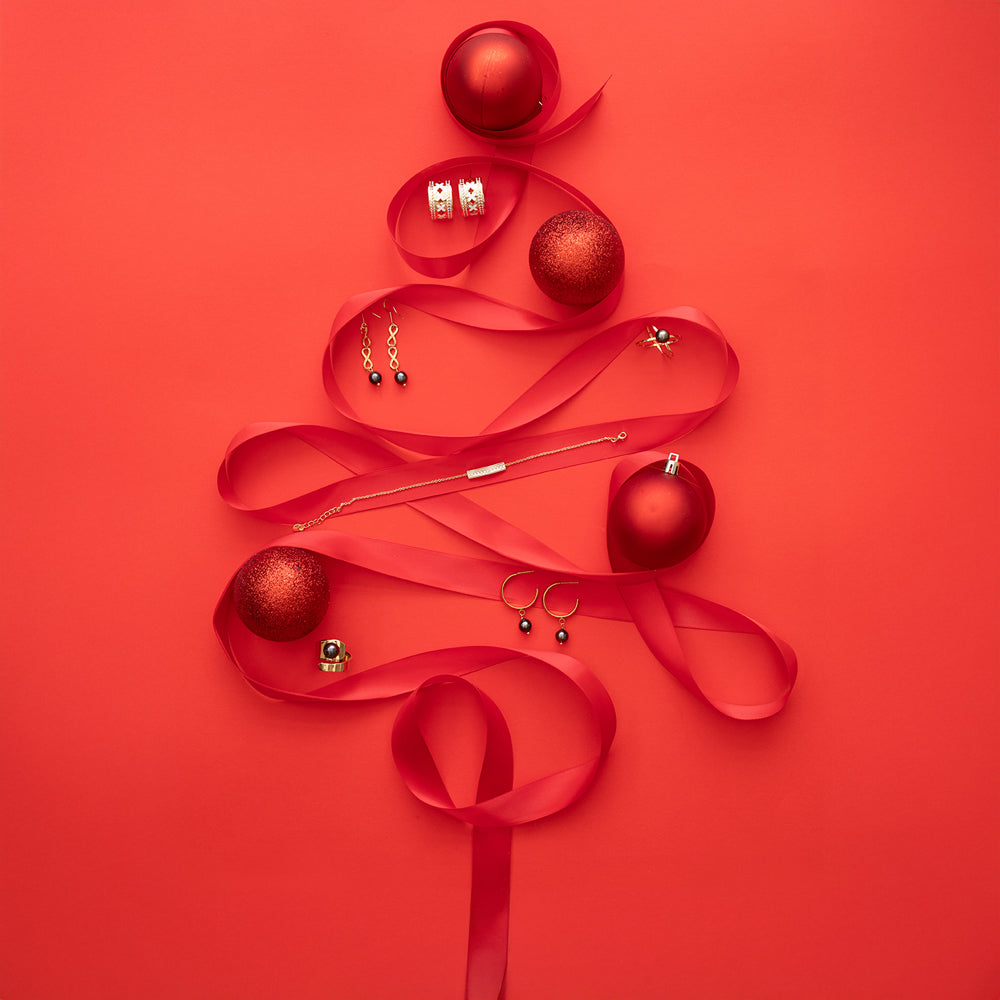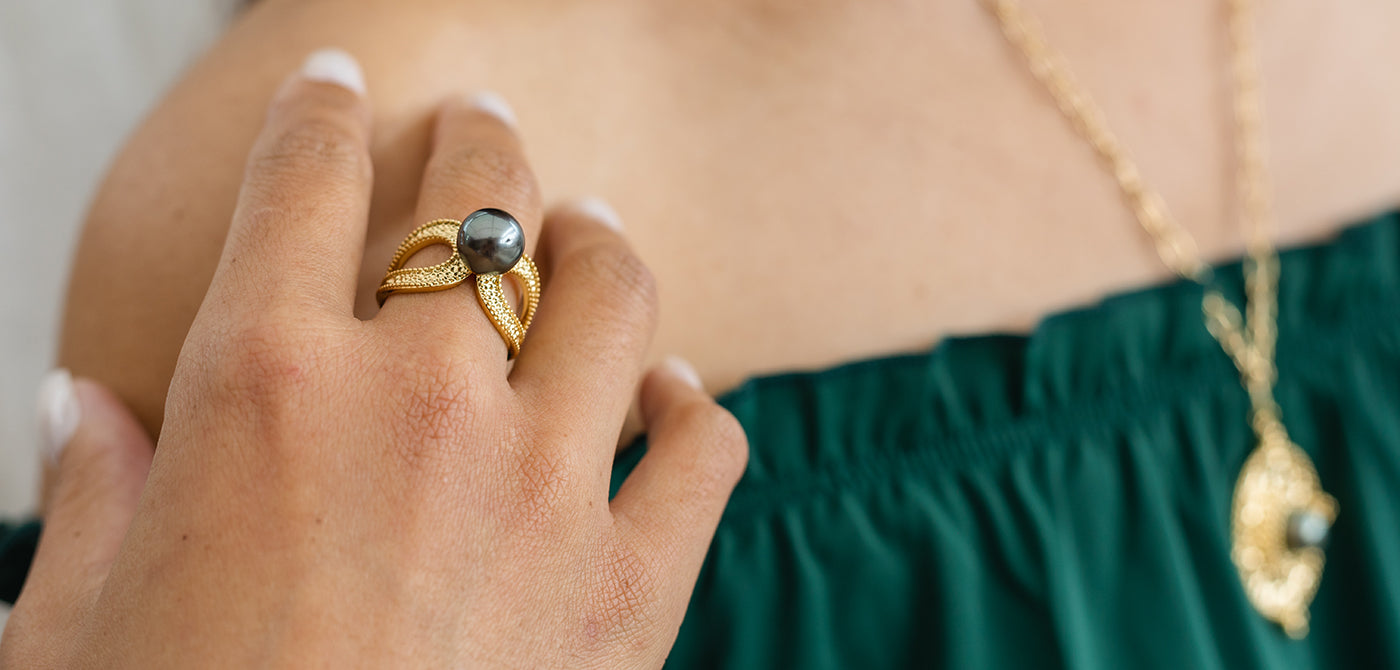Our Pearl Grading Guide
There are, what seems like, endless different standards for grading systems that are used throughout the world when it comes to pearl grading. Unfortunately, there is no universal standard. Each standard varies in value factors. Here's a little bit about our grading system so that you know exactly what you are purchasing.
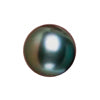
AAA GRADE
Quality:
AAA is the top standard quality available for Tahitian black pearls. This represents less than 5% of the pearl harvest.
Surface:
98% blemish free
Lustre:
Very good to excellent
Shape:
Round

AA Grade
Quality:
AA Tahitian black pearls represents around the top 10% of the pearl harvest. These pearls usually show a lustre similar to AAA Grade pearls with slightly more surface blemish.
Surface:
95% blemish free
Lustre:
Very good to excellent
Shape:
Round

A Grade
Quality:
A Tahitian black pearls represent the top 20% of the pearl harvest. These pearls exhibit great beauty with a few small blemishes.
Surface:
90% blemish free
Lustre:
Very good to excellent
Shape:
Round

B Grade
Quality:
B grade Tahitian black pearls display less luster and have more surface flaws that the higher grades. These pearls represent 30% of the total harvest.
Surface:
80% blemish free
Lustre:
Good to very good
Shape:
Round

C Grade
Quality:
C grade Tahitian black pearls display less luster and have more surface flaws than the higher grades. These pearls represent 10% of the total harvest.
Surface:
70% blemish free
Lustre:
Fair to good
Shape:
Round

D Grade
Quality:
D is a commercial grade for loose Tahitian pearls which are not exported from Tahiti. This grade represents over 25% of the pearl harvest.
Surface:
60% blemish free
Lustre:
Fair
Shape:
Round
For reasons such as these, it's extremely important when purchasing pearls to be absolutely certain of the meaning of any descriptive terms used by the seller. If possible, ask for an Authenticity Card. Reputable Jewellers will be happy to comply with such a request. Only in this way will you be able to determine if the price the seller is asking is reasonable.
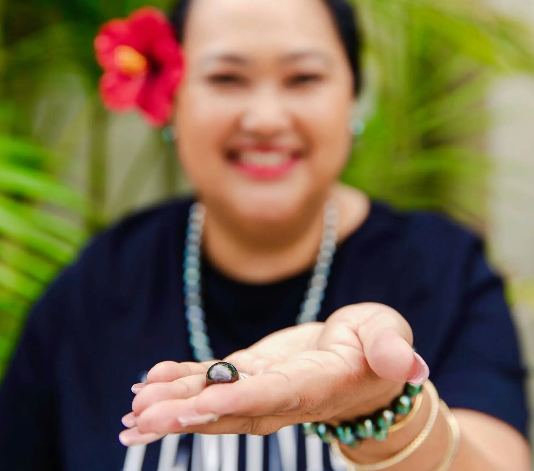
Pearl value factors
I love, love, pearls, but let’s face it, buying pearl jewellery can be expensive. I received my first pearl jewellery from my great grandmother, and they were the plastic kind that ended up peeling and ruining your outfit! LOL. That is not what we sell at Shahana Jewels and because I appreciate you spending your hard earned money with us, instead of the local takeaway, I wanted to share seven things that influence the value, and subsequently, the price of your pearls! All of the things I am about to mention are influenced by rarity, if pearls are rarer, that probably means you paid or will pay a higher price for it!
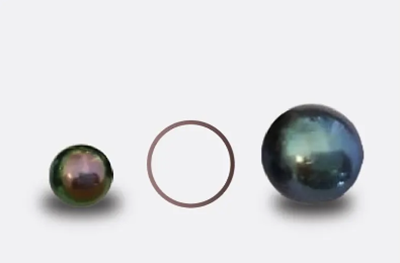
Size
Like you probably predicted, bigger pearls mean more dollar bills! Shahana Jewels pearls range between 8-15mm.
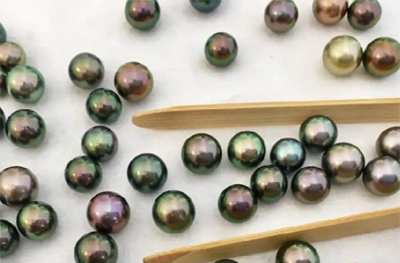
Colour
If you've only seen deep, dark, tahitian pearls - then you are missing out! Pearls come in a variety of colours. Not only do these pearls look gorgeous, but some colours are more rare than others, adding to their value. The most desired and highest valued pearl colour is peacock green.
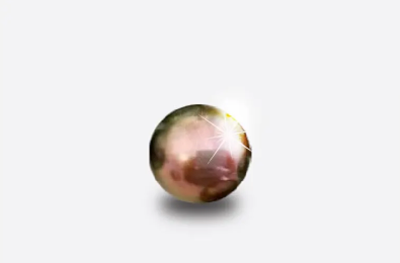
Lustre
Lustre is what makes your pearls shine bright like a diamond - well kinda! The shine is produced by layers of nacre that are built up in the pearl during their years within the oyster. The better the reflection you can see in the pearl, the higher the value.
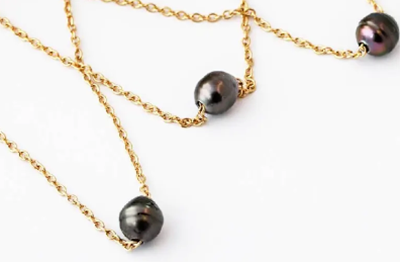
SURFACE
No pearl is perfect. All pearls have some imperfections and while I think it's part of the character, you're probably wondering what is normal and what is not. Some imperfections can be found on the top layer aka surface of your pearl. But most times these imperfections are not visible to the naked eye. Blemishes range from skin imperfections, dents and pits; pits being the least acceptable flow.
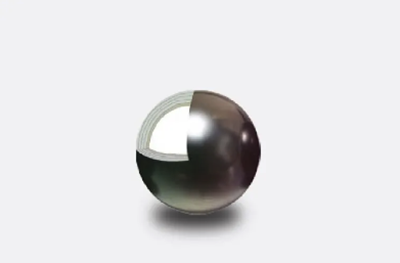
NACRE
Pearl harvesting is one of my favourite things ever and it is no wonder then, that one of the seven factors that influence the value of your pearls comes down to nature. The layers that are secreted from the oyster to form around the foreign object inside and form the pearl are called Nacre. The thicker the layers of nacre, the longer you can expect your pearl to last. Low quality pearls have thin layers of nacre which affect the beauty and longevity of the pearl.
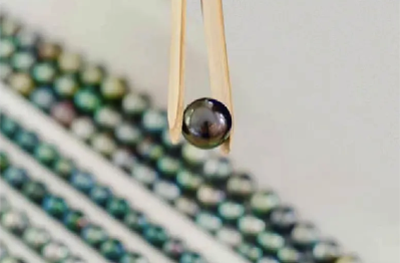
SCARCITY
As with everything in life, supply and demand comes into play. Pearls aren't 'built' in a day, and there are many factors that go into the quality of the pearl harvest - so no two seasons are the same. If the harvest does not go well, it may produce very little pearls or pearls of lower quality. This scarcity drives up the value of pearls.
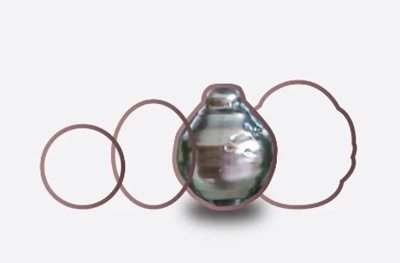
SHAPE
An obvious identifier when it comes to the value of your pearls, is shape. While you might be accustomed to seeing round pearls, they are actually the rarest pearls. Other shapes include semi-round, button, drop, circle and baroque. I like to think that all pearl shapes are beautiful, just like us gals, so I don't judge my pearls based on shape alone! There are some gorgeous baroque shapes out there, and those tend to be well priced too, because of their individuality! Think of it like this, even though every pearl is different, I am able to create the same design using all my round pearls. When I use baroque pearls, the pearl jewellery is even more one of a kind and limited edition.

